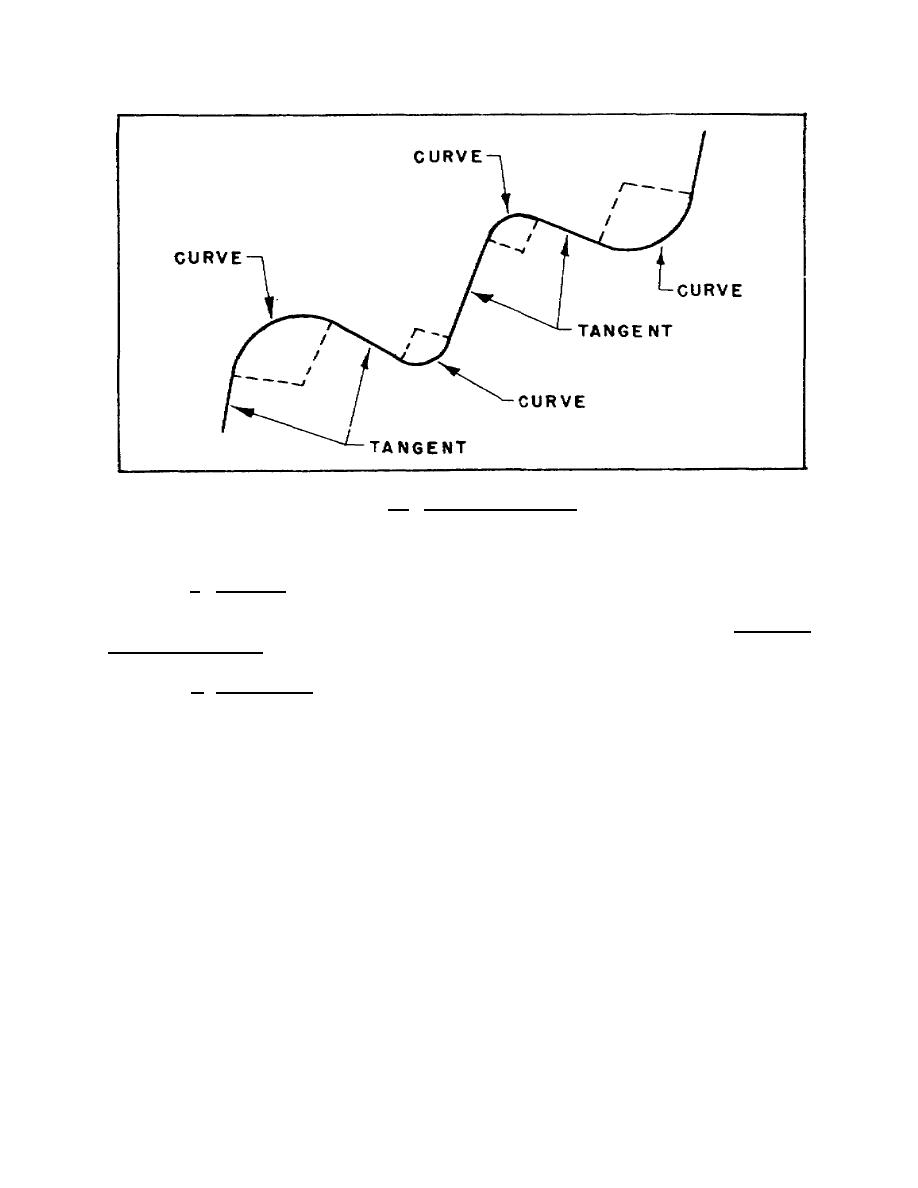
Figure 1.3. Tangents and Curves.
sharper the curve; for example, a 10-degree curve is sharper than a 3-degree curve.
b. Easement. In actual practice, the ends of the curves are flattened out to provide a
smoother ride for trains. The flattened out portions are called easements or transition curves.
Geometrically they are segments of spirals. However, they are not discussed here but in Railway
Track Maintenance II where they are treated in some detail.
c. Right of way. As we mention earlier, the path a railroad follows, known as its
alinement, is made up of curves and tangents. Along the line are many and various structures
and facilities: towers, stations, fences, bridges, tunnels, etc. The strip of land occupied by the
tracks and other structures is called the right of way. The legal definition of right of way is "the
authority by which the railroad holds the land over which it travels." But we are interested in the
meaning first referred to, the strip of land. Unless otherwise indicated, the term right of way as
used in track maintenance means the property itself rather than the right by which the property
is held.
A railroad's right of way is shown on a right-of-way map. On it, the right of way
is shown by property lines and the track is represented by a centerline, an imaginary line which
runs halfway between the two rails of a track. It is on this line that all construction or
maintenance clearance measurements are based. The symbol
9



 Previous Page
Previous Page
